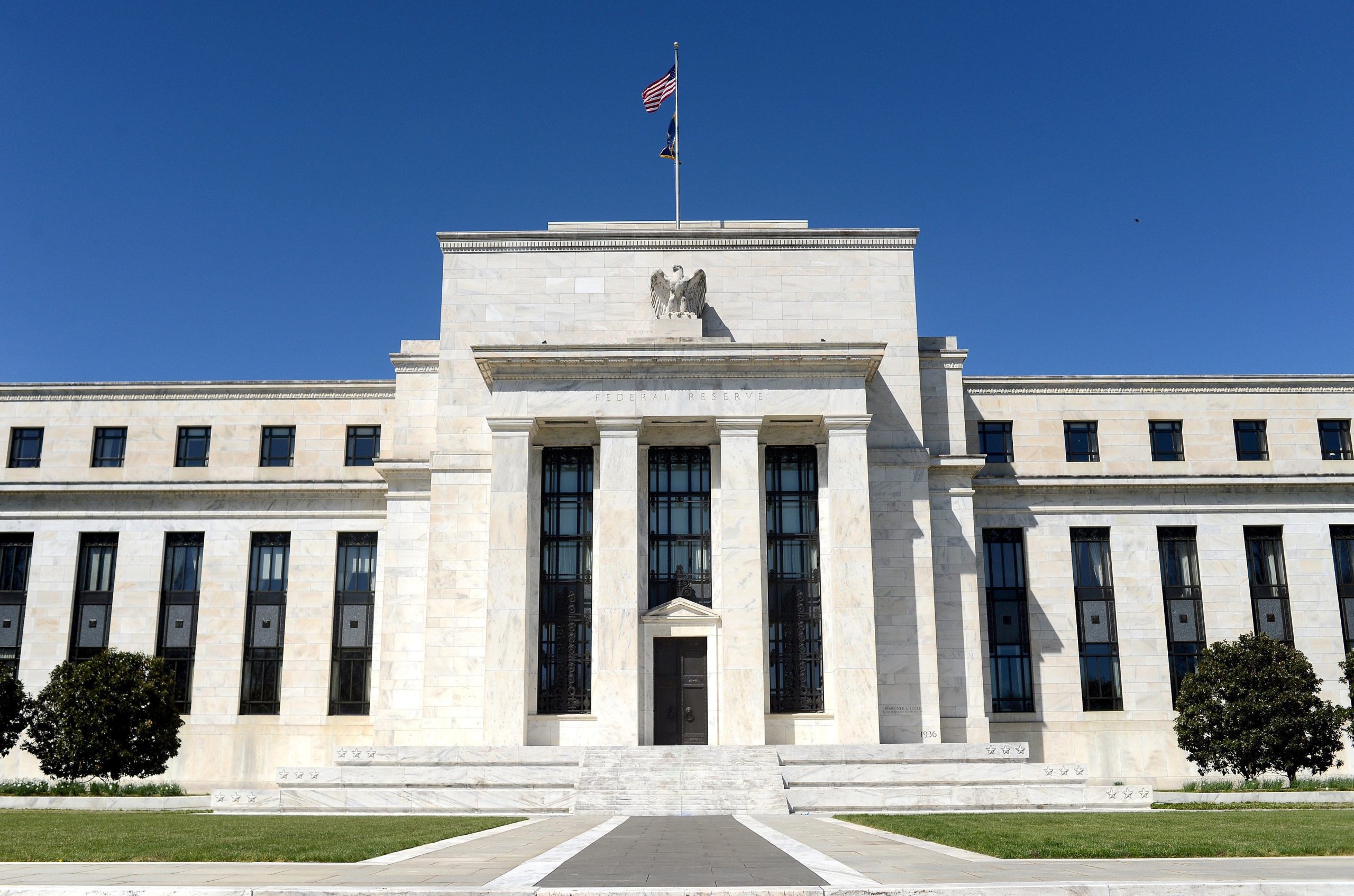Jerome Powell Buckles: Federal Reserve Forced to Slash Interest Rates Under Trump Pressure – Your 2025 Financial Guide

Hey there, savvy investors and everyday money managers at The JK Team. If you’ve been glued to the financial news (and who hasn’t in this wild 2025 economy?), you’ve probably heard the buzz: Jerome Powell and the Federal Reserve just dropped interest rates by a quarter-point – the first cut in nine months. But here’s the real tea – this isn’t just some routine tweak. It’s Powell being forced to lower rates amid skyrocketing political heat from President Trump and a job market that’s starting to wobble.
At The JK Team, we’re all about cutting through the noise to deliver straightforward financial insights. Today, we’re breaking down why Powell’s folding, what Trump’s tariffs and demands mean for the Fed, and how these Federal Reserve interest rate cuts 2025 could supercharge your mortgage rates, stock market investments, and overall personal finance strategy. Let’s dive in – no jargon, just actionable intel.
The Big Cut: Why Powell Had No Choice But to Lower Rates Now
Picture this: It’s September 18, 2025, and the Fed’s policy committee votes to trim the benchmark federal-funds rate to 4%–4.25%. That’s the lowest in nearly three years, folks. Powell’s team cited a cooling job market as the main driver – unemployment ticking up and hiring slowing faster than expected. Sure, inflation’s still a bit sticky above the 2% target, but the risk of a recession? That’s the elephant in the room forcing their hand.
From a conservative lens, this move screams “economy under pressure.” Trump’s “America First” agenda has juiced growth, but it’s also thrown curveballs like higher import costs. Powell himself admitted the sheer size of Trump’s April “Liberation Day” tariffs – a blanket 10% on all imports, plus extras on steel and aluminum – slammed the brakes on earlier rate cuts by inflating forecasts. “We need to take our time,” Powell said at a European Central Bank panel, echoing the wait-and-see vibe that’s got conservatives cheering for bold action over bureaucratic dithering.
Bottom line? Powell’s not easing rates out of generosity. It’s a defensive play against a delicate economy teetering on Trump’s trade triumphs and global headwinds.
Trump vs. Powell: The Relentless Pressure That’s Breaking the Fed
Let’s call it what it is – President Trump’s been on a tear, publicly blasting Powell for keeping rates “way too high” at 4.25%–4.5% compared to our trading partners. Trump’s vision? Slash ’em down to 1%–2% to slash federal debt costs and unleash borrowing for businesses and families. It’s classic Trump: Cut red tape, cut rates, cut taxes – make America borrow cheap again.
This isn’t subtle pressure. Back in July, the White House ramped up the heat, with two Fed officials even dissenting in favor of an immediate cut while the board held steady. Trump’s calling Powell “too late” on easing, hinting at replacements when his term ends in May 2026. It’s a lose-lose for Powell: Cut too fast, and you risk reigniting inflation from tariffs; hold back, and you get torched for stifling growth.
Conservative outlets like The Washington Times are framing this as the Fed finally waking up to Trump’s economic reality – tariffs boosting U.S. manufacturing but needing rate relief to keep the momentum. No wonder markets shrugged off the cut; investors see more Jerome Powell rate decisions coming, with at least two more quarter-point trims projected for October and December.
What These Forced Fed Rate Cuts Mean for Your Wallet in 2025
Alright, enough Fed drama – how does this hit your bottom line? At The JK Team, we believe in turning policy shifts into profit plays. Here’s the quick-hit impact of these Trump-era interest rate reductions:
- Mortgage Rates on the Horizon: Expect 30-year fixed rates to dip below 6% soon. If you’re house-hunting or refinancing, lock in now – savings could top $200/month on a $300K loan.
- Stock Market Boost: Lower rates = cheaper capital for S&P 500 giants. Tech and manufacturing stocks (think tariff winners like steel producers) could surge 5–10% by year-end.
- Credit Card and Auto Loans: Relief incoming! Average credit card APRs might fall 0.5–1%, saving you hundreds annually if you’re carrying balances.
- Savings Accounts? Meh: Yields on high-yield savings will slide – shift to bonds or dividend stocks for steady income.
Pro tip from The JK Team: With Powell signaling a “shallow sequence” of cuts, now’s prime time for aggressive investing in 2025. But watch inflation – Trump’s trade deals by July’s deadline could flip the script.
Powell’s Tightrope: More Cuts Ahead, But at What Cost?
As Powell wraps his “last stand” before potential ouster, he’s threading the needle between Trump’s demands and Fed independence. Officials like Raphael Bostic are pumping the brakes, saying there’s “little reason” for hasty moves post-cut. Yet, with Trump’s relentless push creating this high-stakes standoff, expect the Fed to keep bending toward lower rates to avoid a full economic chill.
From our view at The JK Team, this is Trump economics in action: Disrupt, demand, deliver. Powell’s forced pivot could spark the growth boom conservatives crave – if inflation doesn’t bite back.
Stay sharp, stay invested, The JK Team

Charlie Kirk: The Unyielding Voice of Freedom and Debate

In a world increasingly fractured by censorship and echo chambers, Charlie Kirk stood as a towering figure of unapologetic conviction. Yesterday, on September 10, 2025, the conservative movement—and America itself—lost one of its brightest HEROS OF FREEDOM when Kirk, the 31-year-old founder of Turning Point USA, was tragically assassinated during a campus event at Utah Valley University. He was there, as always, championing the very principles that make our nation great: healthy debate, freedom of speech, and the conservative values etched into our Founding Fathers’ vision. Charlie didn’t just preach these ideals; he lived them, often at great personal risk. In his final moments, he embodied the courage of those early patriots who risked everything for liberty. He represented the best of us—a joyful warrior who believed in the power of ideas to change hearts and minds.
From Campus Activist to Conservative Powerhouse
Charlie Kirk’s journey began humbly, as a young conservative spotting the need to counter leftist dominance on college campuses. At just 18, he co-founded Turning Point USA in 2012, transforming it into a nationwide force that empowered millions of students to embrace limited government, free markets, and individual liberty—the bedrock conservative values that founded this country. Under his leadership, TPUSA grew into a powerhouse, hosting events that drew thousands and equipping a new generation with the tools to defend America’s exceptionalism. Kirk’s unyielding faith in these principles wasn’t abstract; it was forged in the fires of real-world activism, where he fearlessly took on the cultural elite.
What set Charlie apart was his infectious optimism and deep Christian faith, which he wove into every message. He often shared how his belief in Jesus Christ fueled his mission, declaring, “I’m nothing without Jesus.” This spiritual anchor made him not just a political leader, but a moral compass for young conservatives navigating a secular storm. Even in the face of relentless attacks from the radical left, Kirk’s response was never bitterness, but a call to higher ground—rooted in the Judeo-Christian ethics that inspired our Declaration of Independence.
A Champion of Healthy Debate and Free Speech
If there’s one legacy that will echo through history, it’s Charlie Kirk’s fierce defense of free speech. In an era where universities often silence dissenting voices, Kirk turned campuses into battlegrounds for ideas. He made it his signature to sit at a “Prove Me Wrong” table, inviting anyone—left, right, or center—to challenge him on hot-button issues like transgender policies, election integrity, or the Second Amendment. This wasn’t grandstanding; it was a deliberate embrace of the Socratic method, proving that truth emerges from vigorous, civil discourse.
Kirk lived the First Amendment, hosting open forums where dialogue trumped dogma. At events nationwide, he welcomed tough questions and lively debates, showing students that conservative ideas could stand up to scrutiny. His close friends recall how he approached even the most hostile crowds with “no fear,” armed only with facts and faith. Tragically, it was this commitment that led to his death: gunned down mid-event while defending the right to speak freely. As Utah Governor Spencer Cox poignantly noted, “Charlie believed in the power of free speech and debate to shape ideas and to persuade people.” In silencing him, the assassin only amplified his message—reminding us that the cost of liberty is eternal vigilance.
Even across the aisle, Kirk’s approach earned respect. Liberal commentators have praised his willingness to engage detractors head-on, calling it “the right way to do politics.” He didn’t just defend free speech; he embodied it, fostering a culture where ideas clash but people connect. This is the healthy debate our founders envisioned—one that strengthens democracy, not shatters it.
Upholding the Conservative Values That Built America
At his core, Charlie Kirk was a steward of the timeless truths that birthed the United States: self-reliance, moral clarity, and unalienable rights endowed by our Creator. He railed against the woke agenda eroding these foundations, mobilizing youth to reject socialism and reclaim patriotism. Through TPUSA’s initiatives, he instilled in students the conviction that America’s founding principles—limited government, free enterprise, and religious liberty—aren’t relics, but rocket fuel for human flourishing.
Kirk’s movement will only grow stronger in his absence, as allies vow to carry the torch. President Trump himself announced plans to award Kirk the Presidential Medal of Freedom posthumously, honoring his “boundless pride in America.” World leaders from Italy to beyond have echoed this sentiment, mourning a man whose “valiant belief in free speech” left an indelible mark.
A Call to Honor the Best of Us
Charlie Kirk wasn’t perfect—no one is—but he was profoundly good. A husband, a son, a friend who poured his life into making America freer and bolder. His assassination, decried as a “political assassination” by those who knew him best, underscores the stakes in our cultural battles. Yet, in true Kirk fashion, it also spotlights the resilience of the ideas he died for.
To honor him, we must do what he did: speak boldly, debate fiercely, and love deeply. Engage that classmate with differing views over coffee. Host your own “Prove Me Wrong” discussion. And above all, recommit to the conservative values that make America the envy of the world. Charlie believed in us—his generation and the next. As one young conservative put it, “Charlie Kirk believed in me and my generation. We should honor him by speaking with courage.”
Rest in peace, Charlie. You never gave up the fight, and neither will we. Your light shines brighter today than ever.
MAY YOU NEVER BE FORGOTTEN. LIBERTY WINS.

Why It’s Taking Longer to Sell Homes in Pennsylvania, Especially Berks County

The housing market in Pennsylvania has been a rollercoaster in recent years, but as we head into the fall of 2025, one trend is becoming clear: homes are lingering on the market longer than they have in the recent past. This is particularly noticeable in Berks County, a region known for its mix of suburban charm and proximity to major cities like Philadelphia and Allentown. While the market remains competitive in some pockets, sellers are facing extended timelines due to a combination of economic factors, shifting buyer behavior, and broader monetary policy decisions. In this post, we’ll dive into the real-time data (as of September 2025) and explore the key reasons behind this slowdown, including why the U.S. Federal Reserve (Fed) is holding off on interest rate cuts even as the European Central Bank (ECB) has moved more aggressively.
Current Data on Pennsylvania’s Housing Market
Statewide, Pennsylvania’s housing inventory has been climbing, signaling a shift from the ultra-low supply that defined the post-pandemic boom. According to the Pennsylvania Association of Realtors, there were 42,272 homes on the market in July 2025, marking a 9.5% increase year-over-year. This uptick in listings is contributing to a more balanced market, but it’s also extending the time it takes for homes to sell. While exact statewide days-on-market figures for September aren’t yet finalized, trends from mid-2025 show an average of around 20-30 days, up from the sub-10-day frenzies seen in 2022-2023.
Spotlight on Berks County: A Closer Look at the Numbers
Berks County exemplifies this cooling trend. Data from multiple sources paints a picture of a market that’s still active but noticeably slower:
- Median Days on Market: As of July 2025, the median days on market stood at 26 days, according to Federal Reserve Economic Data (FRED) and Trading Economics. This is a slight increase from earlier in the year and higher than the 7-8 days reported in some hyper-local areas like West Reading. Realtor.com reports an average of 24 days on market for the county overall.
- Time to Pending: Zillow data indicates homes go pending in about 7 days, consistent with Redfin’s July figures, which also show 7 days on market—unchanged from the previous year but slower than the peak seller’s market of 2023. However, this “pending” metric doesn’t capture the full sales cycle, which can extend due to financing delays.
- Sales Volume and Inventory: Redfin notes 401 homes sold in July 2025, down from 410 the year prior, with inventory levels rising. The median home value is around $308,616 (up 4.8% year-over-year per Zillow), but ATTOM data pegs the median sale price at $260,000 with 5,539 total sales in the past year.
| Metric | Berks County (July 2025) | Year-Over-Year Change | Source |
|---|---|---|---|
| Median Days on Market | 26 days | Slight increase | FRED/Trading Economics |
| Days to Pending | 7 days | Unchanged | Zillow/Redfin |
| Homes Sold | 401 | Down 2.2% | Redfin |
| Median Home Value | $308,616 | Up 4.8% | Zillow |
| Inventory | Rising (statewide up 9.5%) | Up | PA Realtors |
These figures suggest that while Berks County isn’t in a full slump, the pace has slowed compared to the seller-dominated markets of recent years. Homes that might have sold in under a week now often require 2-4 weeks, especially for properties needing updates or in less desirable neighborhoods.
Key Reasons Why Homes Are Taking Longer to Sell
Several interconnected factors are at play, turning what was once a red-hot market into one that’s more tempered:
- Rising Inventory and Buyer Caution: With more homes available (up nearly 10% statewide), buyers have options and aren’t rushing into bids. In Berks County, this means sellers must price competitively and stage homes impeccably to avoid extended listings.
- Economic Uncertainty and Affordability Challenges: Pennsylvania’s economy, tied to manufacturing and energy, is feeling the pinch from ongoing trade tensions. Buyers are wary of committing amid job market slowdowns, even if unemployment remains low.
- High Mortgage Rates: This is the big one. Mortgage rates hover around 6-7% in September 2025, deterring potential buyers who qualified for lower rates in prior years. Higher rates mean higher monthly payments, shrinking the pool of qualified buyers and extending negotiation periods.
These local dynamics are amplified by national monetary policy, which brings us to the Fed’s role.
Why the Fed Is Delaying Interest Rate Cuts (While Europe Isn’t)
The Fed has kept its benchmark rate steady at 5.25-5.50% through much of 2025, with markets pricing in only a 50-80% chance of a cut at the September meeting. This caution stems from a resilient U.S. economy: solid job growth (despite some slowing), consumer spending holding up, and inflation that’s sticky above the 2% target. Recent tariffs under President Trump’s administration have added inflationary pressures, as imported goods become pricier, prompting the Fed to avoid cuts that could overheat the economy further.
In contrast, the ECB has cut rates multiple times in 2025—eight by June, bringing its key rate to 2%—in response to slower eurozone growth, inflation closer to target (around 2%), and greater vulnerability to U.S. tariffs, which hit European exports hard. The eurozone’s weaker recovery from global disruptions allows the ECB to ease policy more aggressively without reigniting inflation. As ECB officials note, trade tensions are increasing disinflationary risks in Europe, justifying cuts to stimulate borrowing and investment.
The divergence highlights fundamental differences: The U.S. economy is stronger and more insulated from global shocks, allowing the Fed to prioritize inflation control over immediate relief. For Pennsylvania home sellers, this means sustained high rates could keep the market sluggish into 2026 unless the Fed pivots soon.
What This Means for Sellers in Berks County
If you’re listing a home in Berks County, patience is key. Work with a local realtor to price right, highlight unique features, and consider incentives like rate buydowns. The market isn’t frozen—homes are still selling—but the days of instant offers are waning. Keep an eye on the Fed’s September 18 meeting; a rate cut could reignite buyer interest.
In summary, longer sell times in Pennsylvania and Berks County boil down to more supply, buyer hesitation, and persistent high rates amid a cautious Fed. While Europe enjoys looser policy, the U.S. is playing it safe. For real-time updates, check sources like Zillow or Redfin, as markets can shift quickly.

Events This Weekend in Philadelphia and Surrounding Counties

Hey everyone! If you’re looking for fun things to do this weekend (August 16-17, 2025) in Philadelphia and nearby counties like Bucks, Montgomery, Delaware, Chester, and Camden, we’ve got you covered. From massive music festivals and high-energy concerts to cultural celebrations and food fests, there’s something for everyone. We’ve organized it by day for easy planning—check out the highlights below, complete with brief details, locations, and times where available. Note that times and details can change, so double-check official sites before heading out.
Saturday, August 16, 2025
-
Philadelphia Folk Festival: This iconic multi-day event features folk music performances, camping, crafts, food vendors, and family-friendly activities. It’s a staple for music lovers. Location: Old Pool Farm, Upper Salford Township (Montgomery County). All day (gates typically open early morning).
-
Festival of India: Celebrate Indian culture with vibrant dances, crafts, cuisine, and performances as part of the PECO Multicultural Series. Location: Cherry Street Pier, 121 N. Christopher Columbus Boulevard, Philadelphia. Afternoon/evening (exact start time TBD).
-
Linkin Park: From Zero World Tour: The legendary rock band returns with a high-octane concert featuring hits and new tracks, with opener Jean Dawson. Location: Xfinity Mobile Arena (Wells Fargo Center), Philadelphia. 7:30 PM.
-
Billy Idol Concert: Rock out to the punk icon’s hits like “Rebel Yell” during his “It’s A Nice Day To…Tour Again!” show. Location: The Mann Center, Philadelphia. 7:30 PM.
-
Elle Varner Concert: Enjoy soulful R&B vibes from this talented singer-songwriter in an intimate setting. Location: City Winery, Philadelphia. Evening show (check for exact time).
Sunday, August 17, 2025
-
Philadelphia Folk Festival (Final Day): Wrap up the weekend with more folk tunes, workshops, and community vibes at this beloved festival. Location: Old Pool Farm, Upper Salford Township (Montgomery County). All day.
-
Caribbean Festival: Dive into Caribbean culture with music, dance, crafts, and delicious food from the PECO Multicultural Series. Location: Cherry Street Pier, 121 N. Christopher Columbus Boulevard, Philadelphia. Afternoon/evening (exact start time TBD).
-
SWV Featuring Dru Hill and Lady Alma: A rescheduled R&B throwback concert with hits from these ’90s icons—perfect for a nostalgic night out. Location: The Dell Music Center, Philadelphia. 7:00 PM (doors at 5:30 PM).
-
Hiatus Kaiyote Concert: Groove to the neo-soul and future beats of this Grammy-nominated Australian band. Location: Franklin Music Hall, Philadelphia. 8:00 PM.
-
John Oates & The Good Road Band: Hall & Oates legend John Oates performs rootsy rock and blues in an outdoor park setting. Location: Upper Merion Township Building Park, King of Prussia (Montgomery County). 6:00 PM.
-
Philadelphia Taco Festival: Indulge in tacos from local vendors, plus drinks, music, and games at this tasty food festival. Location: Xfinity Live!, Philadelphia. All day (check for specific hours).
This info is provided by https://thejk-team.com, John and Kymberlie—it’s a WIN-WIN with John and Kym! With years of expertise in the Philadelphia real estate market, John and Kymberlie offer personalized, top-notch services to help you buy, sell, or invest in properties across Philadelphia and its surrounding counties. Their commitment to client satisfaction, deep knowledge of the local market, and dedication to making your real estate journey seamless make them the go-to team for all your housing needs. Whether you’re a first-time homebuyer or a seasoned investor, visit https://thejk-team.com to connect with John and Kymberlie and discover why it’s always a WIN-WIN with their professional, community-focused approach.
Exciting Events in and Around Philadelphia This Weekend: August 8-10, 2025

Get ready for a vibrant weekend in Philadelphia and its surrounding areas, packed with festivals, cultural experiences, and family-friendly activities. From outdoor movie screenings to food festivals and live performances, there’s something for everyone in the City of Brotherly Love and nearby Montgomery County. Here’s a curated list of events happening August 8-10, 2025.
Philadelphia Highlights
Friday, August 8
-
National Pickleball Day at Headhouse Plaza
Celebrate National Pickleball Day with all-ages fun at Headhouse Plaza. Four pickleball courts will be set up for all-day play (sign up early!), accompanied by a live DJ, cocktails, and pickle-themed bites at Bridget Foy’s.
Location: 2nd & South Streets, Philadelphia, PA
Details: Free to attend, all skill levels welcome. -
Assembly Required Designer Toy Art Festival at the 23rd Street Armory
This weekend-long festival kicks off with a special exhibition, Philly of the Phuture, and a kickoff party at The Space Lab. Expect underground toy designs, live art, DJs, and an adults-only puppet slam.
Location: 22 S. 23rd Street, Philadelphia, PA
Details: Continues through Sunday with food vendors and special events. -
Latin Vibes: Un Verano en Philly at Fringe Bar
Dance the night away at this indoor-outdoor party featuring reggaeton and Latin hits, with two DJs and three bars across two floors.
Location: 140 N. Christopher Columbus Boulevard, Philadelphia, PA
Details: 21+ event, pay-as-you-go drinks.
Saturday, August 9
-
Hip Hop in the Park at The Oval
The fifth annual Hip Hop in the Park brings old-school vibes to The Oval with DJs, MCs, live graffiti, and more. Last year drew 14,000 attendees, so expect a lively crowd!
Location: 2451 Benjamin Franklin Parkway, Philadelphia, PA
Details: Free with RSVP, family-friendly. -
Port Richmond Pierogi Fest
Savor Poland’s famous dumplings at this seventh annual festival in Campbell Square. Enjoy traditional and creative pierogi flavors, food trucks, live music, and local vendors.
Location: 2535 E. Allegheny Avenue, Philadelphia, PA
Details: Free to attend, pay-as-you-go for food. -
Katy Perry at the Wells Fargo Center
Pop icon Katy Perry brings her Lifetimes Tour to Philly, performing hits like Roar and Teenage Dream alongside new tracks from her album 143. Joined by Rebecca Black.
Location: 3601 S. Broad Street, Philadelphia, PA
Details: Ticketed event, check Wells Fargo Center for availability. -
2025 Obon Lantern Floating Ceremony at Shofuso Japanese Cultural Center
This free festival of lights honors ancestors with floating lanterns, Bon-Odori folk dance performances, and food and drink.
Location: Horticultural & Lansdowne Drives, Philadelphia, PA
Details: Ticketed, limited capacity, RSVP recommended. -
17th Annual Classic Hearse Show at Laurel Hill East
Check out rare and decked-out hearses, ambulances, and flower cars at this unique car show in Laurel Hill Cemetery.
Location: 3822 Ridge Avenue, Philadelphia, PA
Details: Pay-what-you-wish admission. -
Ozzy Night at MilkBoy
A 21+ dance party celebrating Ozzy Osbourne and Black Sabbath, with $4 from each ticket supporting the Parkinson’s Foundation.
Location: 1100 Chestnut Street, Philadelphia, PA
Details: Ticketed event, check MilkBoy for details. -
Silent Philly at City Hall
Join a Mardi Gras-themed silent disco with six live DJs spinning pop, rock, hip-hop, and Latin beats. Food trucks and pay-as-you-go drinks available.
Location: 1400 John F. Kennedy Boulevard, Philadelphia, PA
Details: 21+ event, ticketed.
Sunday, August 10
-
3rd Annual Cemita Festival at Cantina la Martina
Celebrate Mexico’s classic cemita sandwich with spins from top Philly chefs at Kampar, Amy’s Pastelillos, and Paffuto. Enjoy live music by DJ Cali Rumba.
Location: 2800 D Street, Philadelphia, PA
Details: $15 per sandwich, cash recommended. -
African Culture Fest at the Philadelphia Zoo
Partnered with ODUNDE 365, this fest features African-inspired music, dance, arts, crafts, and drumming. Included with zoo admission.
Location: 3400 W. Girard Avenue, Philadelphia, PA
Details: Free with general admission, family-friendly. -
Philadelphia Eagles Training Camp: Public Practice at Lincoln Financial Field
Watch the Eagles prepare for the 2025-2026 season with post-practice autographs, cheerleader performances, and family activities.
Location: 1 Lincoln Financial Field Way, Philadelphia, PA
Details: $10.25 tickets, proceeds benefit the Eagles Autism Foundation. -
Free Family Day: Celebrate Norway! at the American Swedish Historical Museum
Enjoy Viking shield-making, Norwegian folk art, and free access to the Across the Atlantic exhibit.
Location: 1900 Pattison Avenue, Philadelphia, PA
Details: Free, RSVP recommended.
Montgomery County Highlights
Saturday, August 9
-
Peach & Sunflower Festival at Linvilla Orchards
Celebrate National Peach Month and peak sunflower season with pick-your-own peaches and sunflowers, hayrides, and peach cobbler sundaes.
Location: 137 W. Knowlton Road, Media, PA
Details: Pick-your-own tickets required, family-friendly. -
Liberty Comic Con at the Greater Philadelphia Expo Center
Comic and anime fans can meet voice actors, artists, and cosplayers, enjoy panels, gaming tournaments, and shop vendors.
Location: 100 Station Avenue, Oaks, PA
Details: Ticketed event, continues through Sunday.
Saturday & Sunday, August 10-11
-
New Hope Automobile Show
This 70-year-old car show features antique and classic cars, with Domestic Car Day on Saturday and Foreign Car Day on Sunday, plus a Volkswagen Bus 75th anniversary celebration.
Location: New Hope-Solebury High School, 180 W. Bridge Street, New Hope, PA
Details: Ticketed event, open to all ages.
Sunday, August 10
-
Ardmore Rock N’ Ride
A free bike race and music festival in downtown Ardmore with kids’ and family races after 3 p.m., live music, and nearby dining options.
Location: Suburban Square, Coulter Avenue, Ardmore, PA (also Schauffele Plaza, Cricket Avenue)
Details: Free to attend, family-friendly.
Ongoing Events
-
Outdoor Movies in Greater Philadelphia
Catch fan-favorite films like Kung Fu Panda, Finding Nemo, and Clueless at various locations, including Wentz Run Park Gazebo in Blue Bell, Greater Plymouth Community Center in Plymouth Meeting, and Debarth Amphitheater in North Wales.
Details: Free, BYO blankets and chairs, dates vary by location. -
Festival of Fountains at Longwood Gardens
Experience dazzling daytime and nighttime fountain shows with 1,719 jets in the Main Fountain Garden and 750 jets in the Open Air Theatre.
Location: 1001 Longwood Road, Kennett Square, PA
Details: Included with admission, through September 28, 2025.


 Facebook
Facebook
 X
X
 Pinterest
Pinterest
 Copy Link
Copy Link



